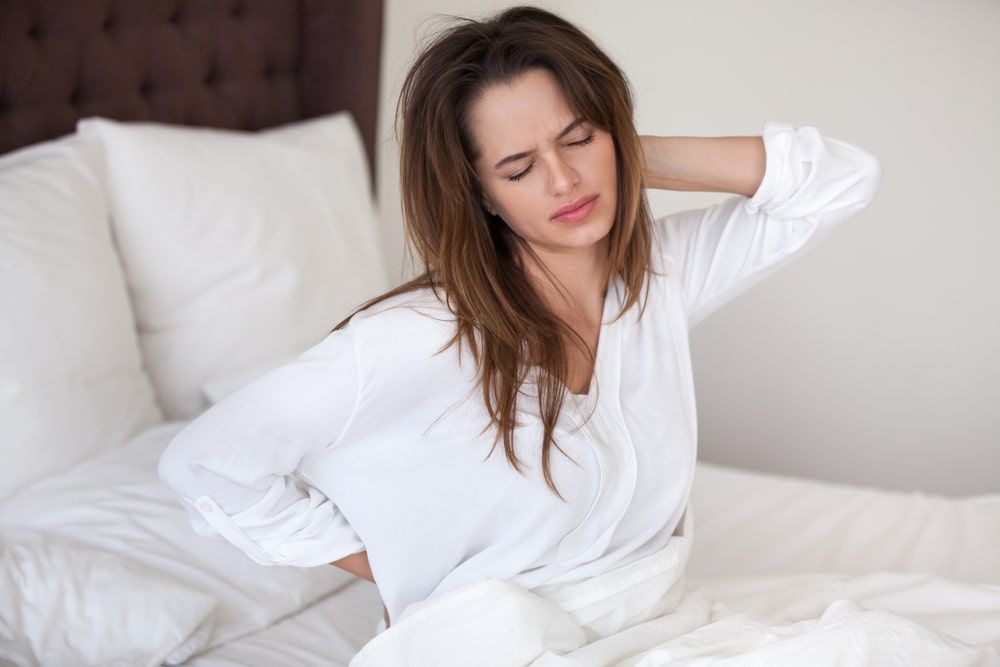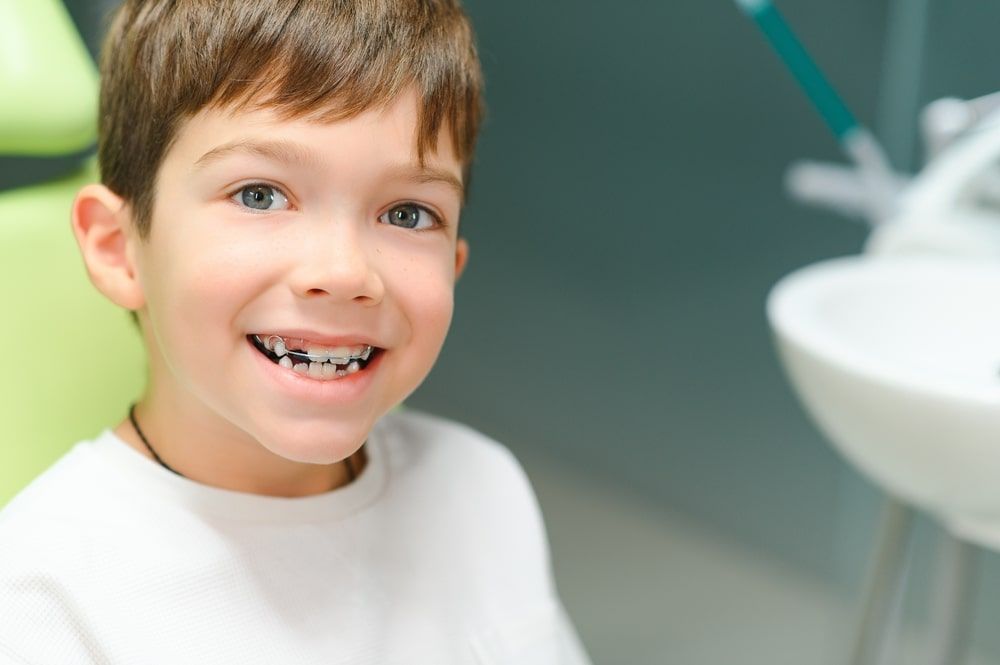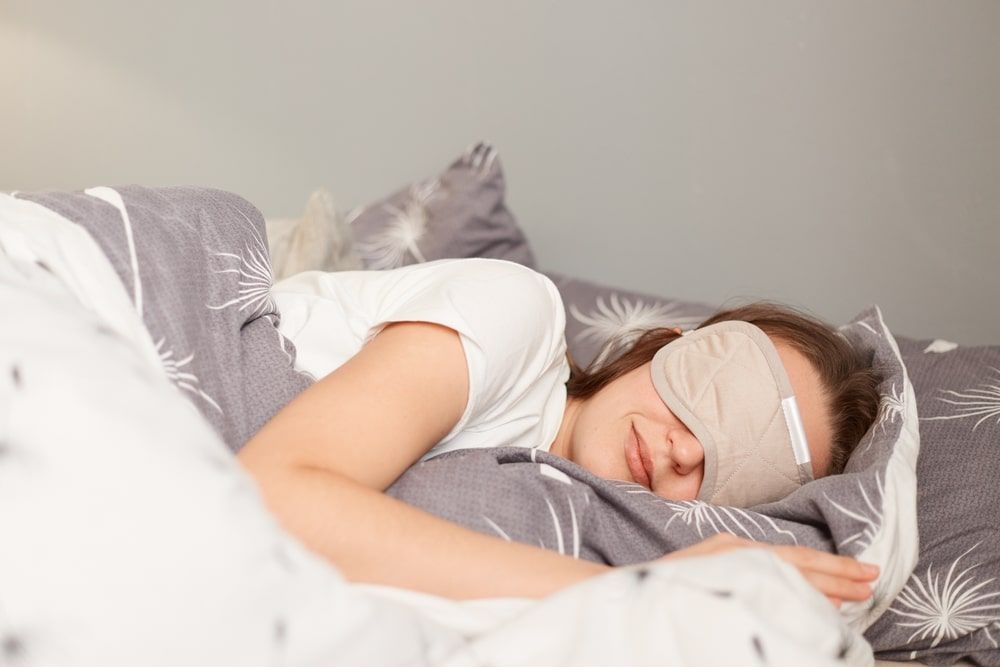Airflow Limitation (Flow Limitation)
Reduced airflow into the lungs due to a partial closure of the upper airway.
Ambulatory Monitor / Ambulatory Sleep Test
Portable system used to measure multiple physiological variables during sleep. This test can be completed in the patient’s home. Also called a HOME MONITOR or HOME SLEEP TEST.
Apnea (Apneic Event)
A period when breathing stops for at least 10 seconds or more during sleep. When an apneic event occurs, airflow to the lungs stops. Apnea literally means “without breath.” Apnea may also be defined as at least a 4% drop in the saturation of oxygen in the blood. When breathing stops or is reduced, the oxygen level in the blood falls because the oxygen is blocked. Therefore, oxygen can’t be absorbed into the blood and circulated through the body. There are two types of apnea. Obstructive Apnea is caused by a closure of the air passage despite efforts to breathe; Central Apnea is a lack of effort to breathe. Obstructive sleep apnea is by far the most common type. True apnea during wakefulness is extremely rare.
Apnea-Hypopnea Index (AHI)
A measure that indicates the severity of sleep apnea. It is the average number of apneas and hypopneas per hour of sleep. This is calculated by adding the total number of all apneas and hypopneas and dividing by the number of hours the patient spends asleep. This measure represents the severity of sleep apnea including sleep disruptions and desaturations (a low level of oxygen in the blood). See Hypopnea. A related measure is respiratory disturbance index (RDI).
Apnea Index
The number of apneas that occur per hour of sleep.
Arousal
An abrupt change from sleep to wakefulness, or from a “deeper” stage of non-REM sleep to a “lighter” stage.
Auto Adjusting Continuous Positive Airway Pressure Device (Auto CPAP)
A type of CPAP machine that measures changes in the individual’s breathing and compensates automatically by making the appropriate adjustment in air pressure. See CPAP.
Bi-level Positive Airway Pressure (Bi-level or Bi-PAP)
See CPAP. A CPAP device providing two measured pressure levels of continuous airflow: one level for inhalation and a lower level for exhalation.
Bruxism
Grinding one’s teeth while asleep. In a small percentage of patients, symptoms include tooth wear, jaw pain and headaches.
Central Sleep Apnea
A period of at least 10 seconds without airflow, during which there is no respiratory effort. Occurs when the brain doesn’t send proper signals to the muscles that control breathing. Unlike obstructive sleep apnea, snoring is typically not present.
Compliance
The process of complying with or adhering to a regimen of treatment.
Continuous Positive Airway Pressure (CPAP)
Medical device used to treat obstructive sleep apnea. A machine supplies positive air pressure to inflate the airway like a balloon which eliminates blockages and prevents the collapse of the upper airway during sleep. Air pressure is delivered through a hose to a mask that fits over the nose, or both nose and mouth. The complete system consists of a programmable pressure generator, tubing, mask and headgear (straps).
CPAP Pressure
The amount of air pressure required to keep the patient’s airway open when being treated with CPAP; expressed in centimeters of water (cm H20). The positive pressure may range from 5 to 20 cm H20. Different patients will require different pressures. This value is determined in a CPAP titration study.
Desaturation
An event where the oxygen level in the blood drops below normal for a given individual.
Diagnostic Sleep Study
A test to determine the absence or presence of a specific sleep disorder. It involves continuous monitoring of several physiological activities during sleep. It can be performed in a sleep disorders center or in a patient’s home with portable recording equipment.
Drowsiness
A state of feeling abnormally sleepy during the day. Drowsy individuals often fall asleep in inappropriate situations or at inappropriate times.
Epworth Sleepiness Scale (ESS)
A simple questionnaire that measures overall level of sleepiness by assessing the likelihood of a patient falling asleep in certain situations.
Excessive Daytime Sleepiness (EDS)
The inability to stay awake and alert during the major waking episodes of the day. Individuals often experience unintended lapses into drowsiness or fall asleep when sedentary or in situations that require no active participation. It may be quantitatively measured by use of subjectively defined rating scales of sleepiness. Also known as, somnolence and hypersomnia.
Fatigue
A feeling of tiredness or weariness usually associated with decreased performance; the inability to sustain emotional, physical or mental effort.
Habitual Snorers
Individuals who snore nearly every night.
High Upper Airway Resistance
Limitation of airflow due to breathing through a narrowed or small airway.
Home Monitor / Home Sleep Test
Portable system used to measure multiple physiological variables during sleep. This test can be completed in the patient’s home. Also called an AMBULATORY MONITOR or AMBULATORY SLEEP TEST.
Hypercapnia
An excess of carbon dioxide in the blood.
Hypersomnia
Sleeping for uncharacteristically long periods of time.
Hypersomnolence
Excessive daytime sleepiness.
HYPERTENSION High blood pressure.
Hypopnea
A partial blockage of the airway or decrease in breathing that is not as severe as apnea. It is marked by a drop in the body’s oxygen saturation level by 3% or more and results in a diminished but not absent airflow. The reduction in airflow is typically 50% or greater.
Hypoxia
Lack of oxygen supply to the body.
Hypoxemia
Below normal level of oxygen in the blood.
Hypoventilation
Reduced rate and depth of breathing.
Insomnia
Sleeplessness; chronic difficulty with falling asleep or staying asleep, or a perception of non-refreshing sleep. Associated with feelings of irritability, daytime sleepiness or fatigue.
Invasive
Refers to a medical procedure which penetrates or breaks the skin or a body cavity for the purpose of collecting data, or for diagnosing or treating a disorder (e.g. surgery).
Laser Assisted Uvuloplasty (LAUP)
A surgical procedure that removes a portion of the uvula and soft palate tissues with a laser to open the airway. It is used to treat simple snoring or mild obstructive sleep apnea Typically, this is an in-office procedure.
Letter Of Medical Necessity (LMN)
Special document that is a certification by a physician that the prescribed item(s) is medically indicated, reasonable and necessary with reference to the standards of medical practice and treatment of the patient’s condition. Sometimes called a CERTIFICATE OF MEDICAL NECESSITY (CMN).
Maxillofacial
Pertaining to the jaws and face.
Maxillomandibular Advancement
A surgical procedure to open the airway. The surgeon cuts the bone of the upper and lower jaws and repositions these structures in a forward position. This surgery is usually performed only when other treatments or procedures have failed.
Mixed Apnea
A breathing disorder characterized by both obstructive apneas and central apneas. It is apnea that begins as a central apnea and ends as an obstructive apnea. NON-INVASIVE Refers to a medical procedure that does not penetrate the skin or a body cavity.
Obesity-Hypoventilation Syndrome
Occurs when a very obese person does not breathe enough oxygen while sleeping. Breathing is characterized by slow and shallow respiration (hypoventilation) during wakefulness which results in an increased level of carbon dioxide in the blood.
Obstructive Sleep Apnea Syndrome
(OSA) A disorder characterized by frequent interruptions in breathing for 10 seconds or more during sleep. Although the upper airway (throat) collapses and is physically obstructed, the individual often continues to have respiratory effort. This results in intermittent decreases in blood oxygen levels and brief arousals from sleep. Often associated with loud snoring, snorting or choking sounds, poor sleep quality, excessive daytime sleepiness, and other symptoms of fatigue.
Oximetry
A test that measures a patient’s pulse and oxygen saturation level in his/her blood.
Oxygen Desaturation
Less than normal amount of oxygen carried by hemoglobin in the blood. A value below 90% is considered abnormal.
Oxygen Saturation
Amount of oxygen carried by hemoglobin in the blood. Normal values range from 90% to 100%. An important indicator of sleep disordered breathing that is directly affected by the degree of throat closure (partial vs. complete) and its duration.
Pharynx
The area at the back of the mouth behind the nares (nasal passages) and the oral cavity, commonly known as the throat. It acts as a passageway for air from the nostrils and the mouth to the lungs; and for food and liquids from the mouth to the esophagus.
Polysomnography (PSG)
A test that records multiple physiological variables during sleep (including brain waves, electrical activity of muscles, eye movement, breathing rate, blood pressure, blood oxygen saturation, and heart rhythm). The test is usually conducted in a sleep lab and involves direct observation of the person during sleep.
Relative Normal Oxygen Saturation Levels
Average oxygen level in a healthy person, usually above 95%. It is altitude dependent.
RERA
Respiratory effort related arousals. It is presently considered in RDI totals. This type of respiratory event does not technically meet the definition of apnea or hypopnea but does disrupt sleep.
Respiratory Disturbance Index (RDI)
A measure of the severity of sleep apnea, including sleep disruptions and desaturations (a low level of oxygen in the blood). Unlike the apnea hypopneas index (AHI), the respiratory disturbance index counts the number of arousals caused by respiratory effort.It is the average number of sleep disordered breathing events that cause an arousal from sleep per hour of sleep. It is calculated by adding the number of apneas, hypopneas and respiratory effort related arousals (RERAs) and dividing by the number of hours the patient spends asleep.
Restless Leg Syndrome
Syndrome characterized by a need to move one’s legs. An annoying deep crawling sensation exists in ones legs during sitting or lying down at nighttime.
Sleep
A period of inactivity in which an individual rests quietly in a recumbent position, disengages from the environment, and become unresponsive to stimuli.
Sleep Apnea
Cessation of breathing for 10 or more seconds during sleep. There are two basic types of sleep apnea: Obstructive Apnea is caused by a closure of the air passage despite efforts to breathe; Central Apnea is a lack of effort to breathe. Obstructive Sleep Apnea is by far the most common type.
Sleep Debt
The accumulated effect of lack of sufficient sleep (sleep deprivation), often results in fatigue and sleepiness. The larger the sleep debt, the stronger the tendency to fall asleep.
Sleep Deprivation
An acute or chronic lack of sufficient sleep. It may contribute to a decreased quality of life, the onset of related health problems, and the increased risk of injury and/or accident.
Sleep Disorder
A disturbance of normal sleep patterns usually related to one of three major symptoms: insomnia, excessive daytime sleepiness or an abnormal event during sleep. The condition can affect the amount, quality, or timing of a person’s sleep.
Sleep Hygiene
Behaviors and environmental conditions that influence the quantity and quality of sleep. Good sleep hygiene practices include such as going to bed the same time each night, sleeping in a dark room, restricting caffeine intake, and avoiding naps during the day.
Sleep Latency
The duration of time (measured in minutes) required to fall asleep.
Sleep Onset
The transition from awake to asleep.
Sleep Stages
- Stage I: Approximately 5% of sleep. Very light sleep between a person being fully awake and sleeping.
- Stage II: Approximately 50% of sleep. Still considered light sleep but is considered to be the true first sleep state. Characterized by sleep spindles and K complexes.
- Stage III & IV: Approximately 20% of sleep, depending on age. Known as delta or slow wave sleep and is deeper, more relaxing sleep.
- REM (Rapid Eye Movement): Approximately 25% of sleep time. Dreams take place in this stage. Many physiologic changes including muscle paralysis. Eyes move side to side.
Snoring
Noise produced during sleep as air passes through the throat and causes the soft tissue to vibrate. The soft palate is only one part of snoring dynamics.
Soft Palate
The muscular fold of tissue that is suspended from the roof of the mouth and extends back from the hard palate. It closes off the nasal cavity from the oral cavity during swallowing or sucking.
Somnolence
Oppressive drowsiness with a high likelihood of falling asleep.
Somnoplasty
Procedure to stiffen soft palate using radio frequency waves.
Subjective Sleepiness
Feelings of sleepiness.
Titration
A method of determining optimal CPAP (continuous positive airway pressure) or oral appliance treatment parameters for sleep apnea. This involves automatic or manual adjustment of the device to a level that eliminates airway blockage.
Tonsillectomy
Surgical procedure to remove the tonsils.
Tracheotomy
Surgical procedure to create an opening in the trachea (windpipe). The opening (tracheostomy) bypasses an obstruction in the airway so breathing can occur. Occasionally used to treat severe obstructive sleep apnea that is non-responsive to other treatment.
Upper Airway
The part of the respiratory anatomy that includes the nose, nostrils, sinus passages, septum, turbinates, tongue, jaw, and palate.
Upper Airway Resistance Syndrome
An obstructive sleep-related breathing disorder in which repetitive increases in resistance to airflow in the upper airway lead to brief arousals (RERAs) and daytime fatigue. Usually associated with loud snoring. Obstructive sleep apnea, characterized by apneas and hypopneas, may be totally absent. Although blood oxygen levels may be in the normal range, the patient can still have symptoms of obstructive sleep apnea (e.g. excessive daytime sleepiness).
Uvula
Small soft structure hanging from the bottom of the soft palate in the midline above the back of the tongue. It is composed of connective tissue and mucous membrane.
Uvulopalatalpharyngeoplasty (UPPP)
Surgical treatment for obstructive sleep apnea and snoring. The procedure removes the tonsils, adenoids, uvula, and excess palatal tissue to open the airway behind the palate. The procedure is performed under general anesthesia and usually requires a one or two day hospital stay.




